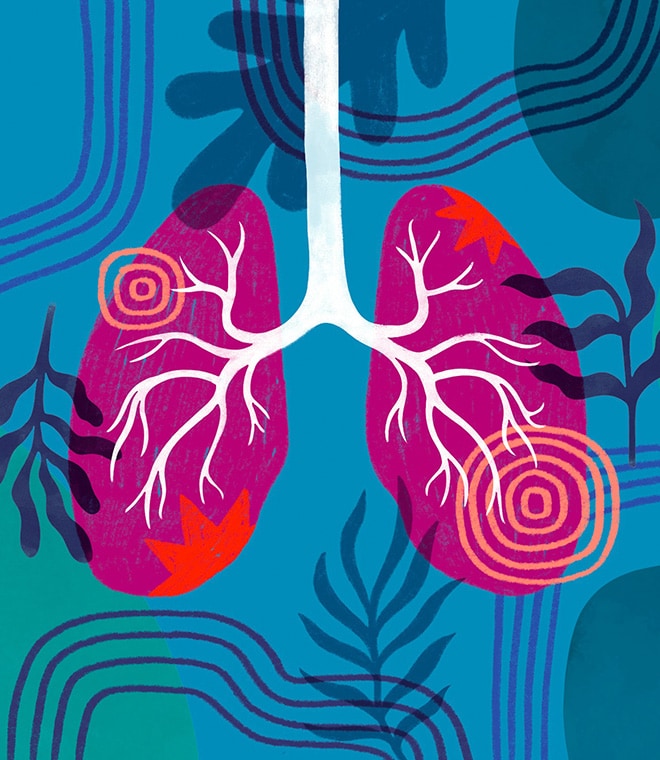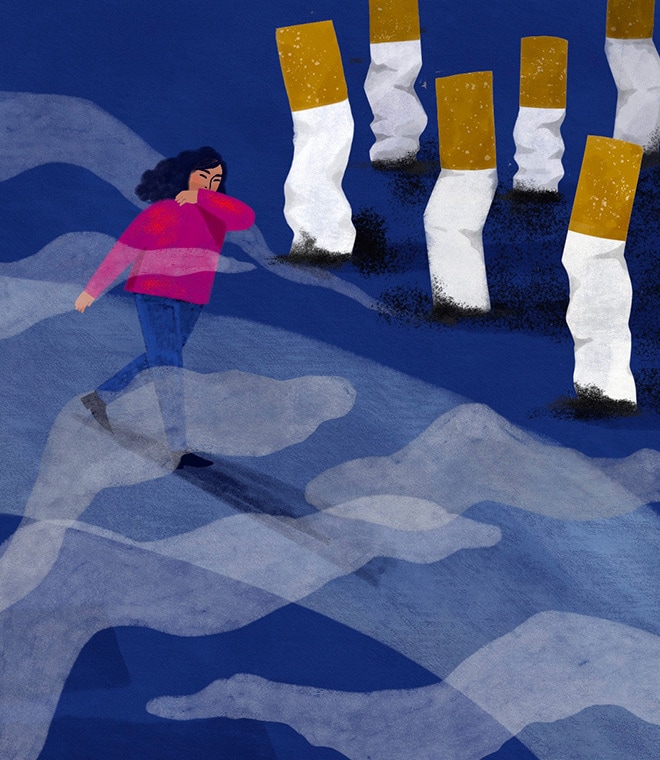Health
What are the symptoms and warning signs of an asthma attack?
By Sanjay “Jay” Patel, DO | Allergy & Immunology Aug 21, 2024 • 7 min
An estimated 35% to 65% of people with asthma experience at least one asthma attack per year. These attacks occur when airways suddenly narrow and become inflamed. During an attack, you may experience one or more of the following symptoms and warning signs:
1. Chest discomfort is one of the most common symptoms of an asthma attack. Some people experience chest pain, while others describe the feeling as a tightness. It may also feel like someone is sitting on your chest. Children may have a hard time describing discomfort and complain of vague symptoms like “not feeling good.” Whatever the sensation, the discomfort occurs due to inflammation of the airways.
2. Shortness of breath occurs when airways suddenly become inflamed, and air cannot move freely in and out of the lungs. This can lead to shortness of breath. You may feel as if you can’t take a full breath, or you can’t catch your breath. Some people even feel like they’re drowning or being smothered.
3. Changes in breathing patterns can occur due to a reduction in airflow into and out of the lungs. You may start to breathe more quickly, and your breaths may become shallower. Gasping may also occur.
4. Difficulty walking can arise as oxygen levels decrease due to an asthma attack. When you do walk, you may notice that you’re out of breath.
5. Difficulty speaking may develop due to shortness of breath and changes in breathing. You may feel like you have to force out your words, or your speech may be labored. Usually this is a sign the attack is very severe, and you should seek medical attention immediately.
6. Wheezing can occur due to blockages in the airways. You may notice a whistling sound when you breathe. Depending on the severity of the attack, wheezing may be subtle or loud enough for other people to hear.
7. Lightheadedness may arise when an asthma attack causes a decrease in oxygen levels in your body. You may feel woozy or like you’re in danger of fainting or passing out.
8. Chest retractions can occur as you work harder to breathe due to an asthma attack. Your skin may visibly suck in around your neck, chest plate or ribs. This symptom is more common in babies and children, but it can occur in adults as well. This is a dangerous sign and can indicate impending respiratory failure, so it is crucial to seek immediate medical attention.
9. Rib or stomach movements may develop due to breathing changes accompanying an asthma attack. Your ribs and/or stomach may move in and out more dramatically as you inhale and exhale. These movements often occur along with chest retractions.
10. Expanded chest may arise as the body attempts to draw in more air. Your chest may stop moving normally when you breathe. Even when you exhale, your chest may remain visibly expanded.
11. Sweating is a symptom for some people. You may begin to perspire during an asthma attack. You may also break out in a cold sweat prior to the start of an attack.
12. Posturing may be altered due to the effects of an asthma attack. Most often, posture takes the form of hunching or rounding of the shoulders.
13. Cyanosis can occur due to a lack of oxygen. This can lead to discoloration of the skin around the eyes and on the lips. You may also develop tongue discoloration due to cyanosis. In people with dark skin, cyanosis typically appears white or gray, while the discoloration is usually blue on lighter skin.
14. Nasal flaring may be visible in infants and children experiencing an asthma attack. They may visibly flare their nostrils as they inhale. The flaring occurs due to difficulty breathing.
15. Irritability can be a symptom in babies and children. Irritability or fussiness may accompany an asthma attack. Infants may also experience confusion and fail to recognize their caregivers during an attack.
Additional warning signs for asthma attacks
While asthma attacks can occur suddenly, some people do experience warning signs in the days preceding flare-ups. Some potential signs that an attack may be imminent include:
- Increased mucus and sputum
- Runny or congested nose
- Itchiness of the nose, chin or neck
- Lethargy or fatigue
Make a plan for addressing asthma attacks before they happen
Symptoms and warning signs of asthma attacks can vary from person to person, and similarly, healthcare providers recommend differing treatments for the sudden worsening of asthma symptoms. Talk to your healthcare provider about what symptoms to watch for and discuss what steps you should take when an asthma attack occurs. By putting together a plan of action ahead of time, you can be ready to respond to symptoms as soon as they start. It is recommended that any person with asthma have a written asthma plan, which you can request from your healthcare provider.
Updated August 2024.
Sources:
- https://aafa.org/asthma/asthma-facts/
- https://acaai.org/asthma/symptoms/asthma-attack/
- https://aafa.org/asthma/asthma-symptoms/
- https://www.nhlbi.nih.gov/health/asthma/attacks
- https://www.mayoclinic.org/diseases-conditions/asthma-attack/symptoms-causes/syc-20354268
- https://www.merckmanuals.com/professional/pulmonary-disorders/asthma-and-related-disorders/asthma#Classification_v913623
- https://medlineplus.gov/ency/patientinstructions/000062.htm
- https://my.clevelandclinic.org/health/symptoms/intercostal-retractions



